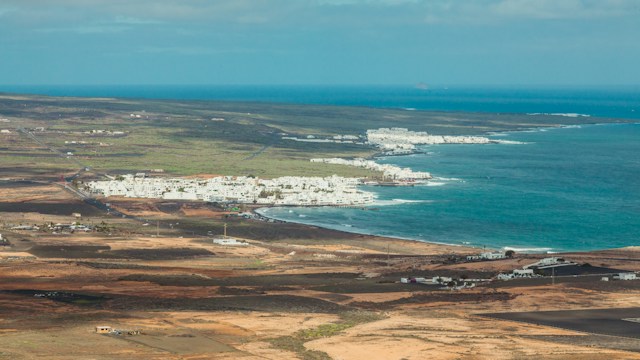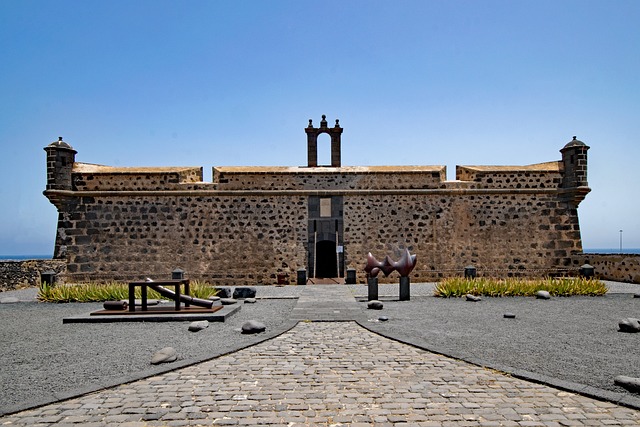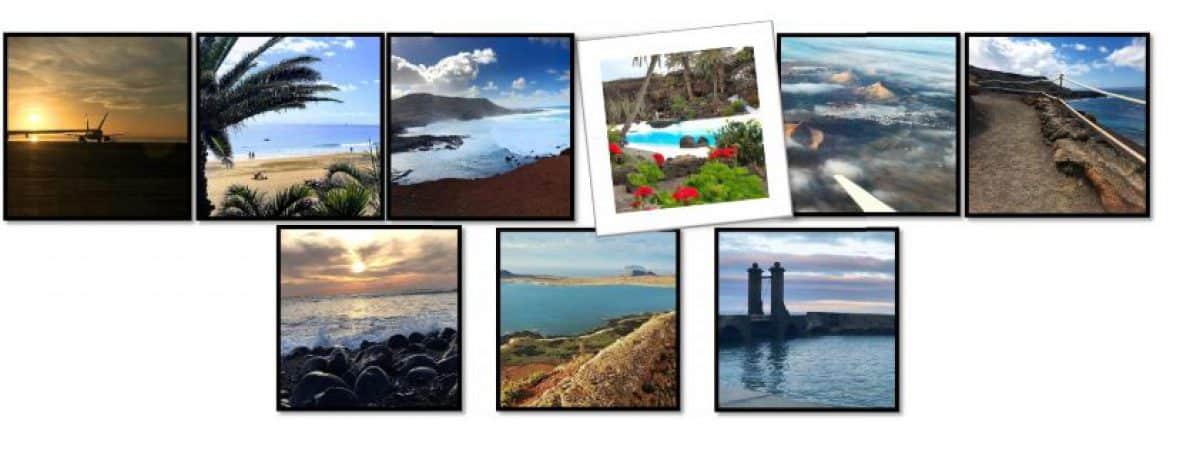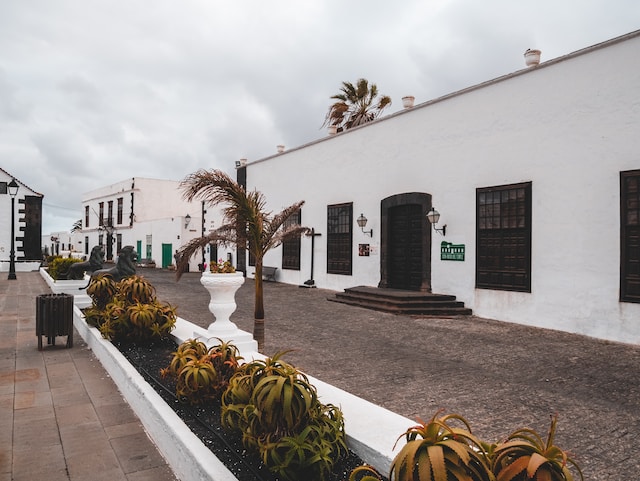This post is also available in:  Español (Spanish)
Español (Spanish)
Visiting such a place like this it is important to know that apart from natural beauties it has a lot of history and details to tell. As experts in airport transfers in Lanzarote we want you to know about the curiosities, as well as a little history of the Island of Lanzarote. Keep reading and discover more about this spectacular tourist destination.
In which way has Lanzarote been formed?
Lanzarote is the northernmost and easternmost point of Spain’s Canary Islands, and its origin is volcanic. This means that it was formed from volcanic eruptions; the lava expelled by these volcanoes solidified, resulting in the spectacular rocky formations seen on the island.
It is estimated that the Island emerged at least 15 million years ago as a result of the Canary access point. It’s a volcanic point that is believed to be in the Canary Islands, north of the coast of Africa. Not only that, but it is supposed to be supported by a mantle plume quite deep and that appeared about 60 million years ago.
The island emerged with others after the breaking of the continental tectonic plates of America and Africa.
The eruptions through which the island emerged were a long time ago and there is no real information about them. The last great eruption for which we have data, took place between 1730 and 1736, in the area known as Timanfaya National Park.
History of the Island of Lanzarote
We already talked about a basic point of history, which is the formation and origin of the island. But, now, it is important that you know about the aborigines of Lanzarote.
Before the conquest in the fifteenth century, Lanzarote was inhabited by aborigines known as majo or maho. They were the residents of the islands of Lanzarote and Fuerteventura, belonging to the Canary Islands.
This village has Berber origins, a race that has inhabited North Africa since ancient times. These people would have arrived in Lanzarote around 500 BC. The Majos were of Neolithic origin, of the Cromagnoid type. On Isla Lanzarote, they explain that “they were a surviving group of European companions.”
The information available about them describe the first conquerors as of European aspect, tall, with a clear complexion, but with a primitive culture. They lived of cattle ranching and fishing but in a very rudimentary way. Agriculture was very basic. They lived in houses built with stones and just few of them in caves.
About morals and religion, they honoured the sun, the moon, and the mountain. They had a high sense of justice, they practised polyandry and women had three husbands. At the time of the conquest of the island the Majos were about 800 in Lanzarote. They did not oppose any resistance to the invasion.
In 1927 Lanzarote became part of the province of Las Palmas. The island today has the status of UNESCO Biosphere Reserve.

The conquest of Lanzarote
In the 14th century started the conquest of the island. At the beginning arrived the Genovese navigator Lancelotto Malocello, known as “Lanzarote da Franca”. � Then a fort was built on the Guanapay Mountain near � the town of Teguise. Years later, the slave trade began on these islands.
The conquest took place in 1402 by French led by the explorer Jean de Béthencourt, who came to the island through the auspices of Castile. They arrived in the south and in a few months they invaded the island. The majos were taken as slaves, and only 300 remained on the island.
The first European settlement on Lanzarote was established in The Rubicon. There the first cathedral was built, but the situation was not so simple, they had fights with English pirates and with locals until the seventeenth century.
As we already said between 1730 and 1736 took place the last big volcanic eruption for which data are available, then there were just smaller ones. At that time the lava ended part of the surface of the island, with 11 villages and smaller volcanoes were formed. Then came the drought and with it the migration of a large part of the population.
Historical Sites and Heritage of Lanzarote
Lanzarote captivates many with its wonderful landscapes and beautiful beaches, but it’s also interesting to learn more about the historical sites and heritage that can be visited on the island, offering a different perspective to traditional tourism.
Monuments and Archaeological Sites
Among the monuments and sites that are part of the island’s archaeological heritage, which stand out, and you can include in your travel itinerary, you’ll find:
- The Archaeological Site of El Bebedero is located in the central region of Lanzarote, near Tiagua. It is a place with a lot of archaeological history on the island, as remains of human settlements have been found buried, which are studied to understand the life of the ancient inhabitants of Lanzarote.
- The Archaeological Museum of Lanzarote is a venue where prehistoric archaeological objects from Lanzarote are preserved, but it also offers a journey to modernity. It was founded in 1975 and is located in the city of Arrecife.
- The town of San Marcial de Rubicón is located in Yaiza, about 20 kilometres from the island’s capital. Founded in the 15th century, the Castle of San José was built there in 1508. A little over 200 years after its founding, a volcanic eruption destroyed it, and it was rebuilt in the 17th century.

Museums and Cultural Centres
The culture of Lanzarote is reflected in the museums and cultural centres found in various locations around the island, such as:
- The Casa Museo del Campesino is a museum of the famous artist César Manrique. It allows visitors to learn more about the customs, objects, life, furniture, tools, and utensils used by the island’s peasants in the 20th century.
- The Wine Museum, located in La Geria, is more recent, having been inaugurated in 1995. It offers a tour through the history and production process of wines in Lanzarote.
- The Casa de los Volcanes, located in the municipality of Yaiza, also designed by César Manrique. It is a space that allows learning more about the geology and culture of Lanzarote.
Curiosities of the Island of Lanzarote
Before visiting Lanzarote, you must know these curiosities of the island.
Which is the best beach in Lanzarote?
It is difficult to choose the best beach in Lanzarote among so many beauties that surround the island. But it seems to be a popular opinion that the best one is in Playa Blanca,� the area of virgin beaches of Papagayo. On our website, you can book transfers from/to the airport from/to Playa Blanca.�
The beach of the town is ideal for sunbath, swimming and enjoy the environment offered by the port where yatches daily arrive. Close to this area you will find a market, hotels, restaurants and sightseeing as the Volcano Montaña Roja.
It stands out for its perfect colors, perfect blue water, white sand and very dark rock formations.
Another beach that also stands out is Playa Francesa by la Graciosa Island and you can find other good beaches in Puerto del Carmen and Caleta de Famara, among others.
Which is the best place where to stay in Lanzarote?
The answer to this question can vary depending on what you want to do on the island and according to your travel mate. The capital, Arrecife, is perhaps the first option, it offers different interesting and historical places to visit.
- Best area for� families: Playa Blanca� is ideal to relax,� a zone of resorts.
- Best area to explore the island: Costa Teguise, is a growing destination located north of the capital. It offers amenities and facilities.
- If you are looking for a calm and coastal environment, the best option could be Punta Mujeres.
- To get closer to the nightlife in Lanzarote, Puerto del Carmen would be the best for you. You can arrange a� transfer from Lanzarote airport to Puerto del Carmen to enjoy the night without worries.
Which is the distance between north and south of Lanzarote?
If we see a map of Lanzarote, we can notice that this island is 60 kilometres from north to south and 25 kilometres from east to west. It has 213 kilometres of coastline, of which only 10 have an area and 16.5 are beaches, while the rest are rocks.
The surface of Lanzarote is estimated at 845.9 square kilometres, plus the islets, so approximately sum total 900.
How many people are there in Lanzarote?
According to the National Institute of Statistics (INE) in Lanzarote until 2016, 145,084 people were counted. Most of the population is concentrated in the capital Arrecife. Most of the residents are Spanish (75%), followed by Colombians, British, Moroccans, Germans, Irish, Ecuadorians and other nationalities.
Impact of Tourism in Lanzarote
Tourism is an essential activity in Lanzarote’s economy. The thousands of people who visit the island can generate a negative impact if measures are not taken, so it is important to take timely action.
Conservation and Sustainability
Educating tourists through awareness campaigns, guided tours, or educational activities are effective tasks for environmental conservation. Moreover, planning and managing tourism by the island’s authorities allows for greater control and ensures quality tourism that does not affect Lanzarote’s natural spaces. On the other hand, investment in sustainable infrastructure, such as renewable energy generation, is necessary.
Another way to prevent tourism from having negative effects on the island is by promoting sustainable tourism.
With these details about curiosities and history of Lanzarote you can learn a little more about this popular destination and its spectacular landscapes are its best letter of introduction. If you want to really discover the island, contact us.
This post is also available in:  Español (Spanish)
Español (Spanish)

